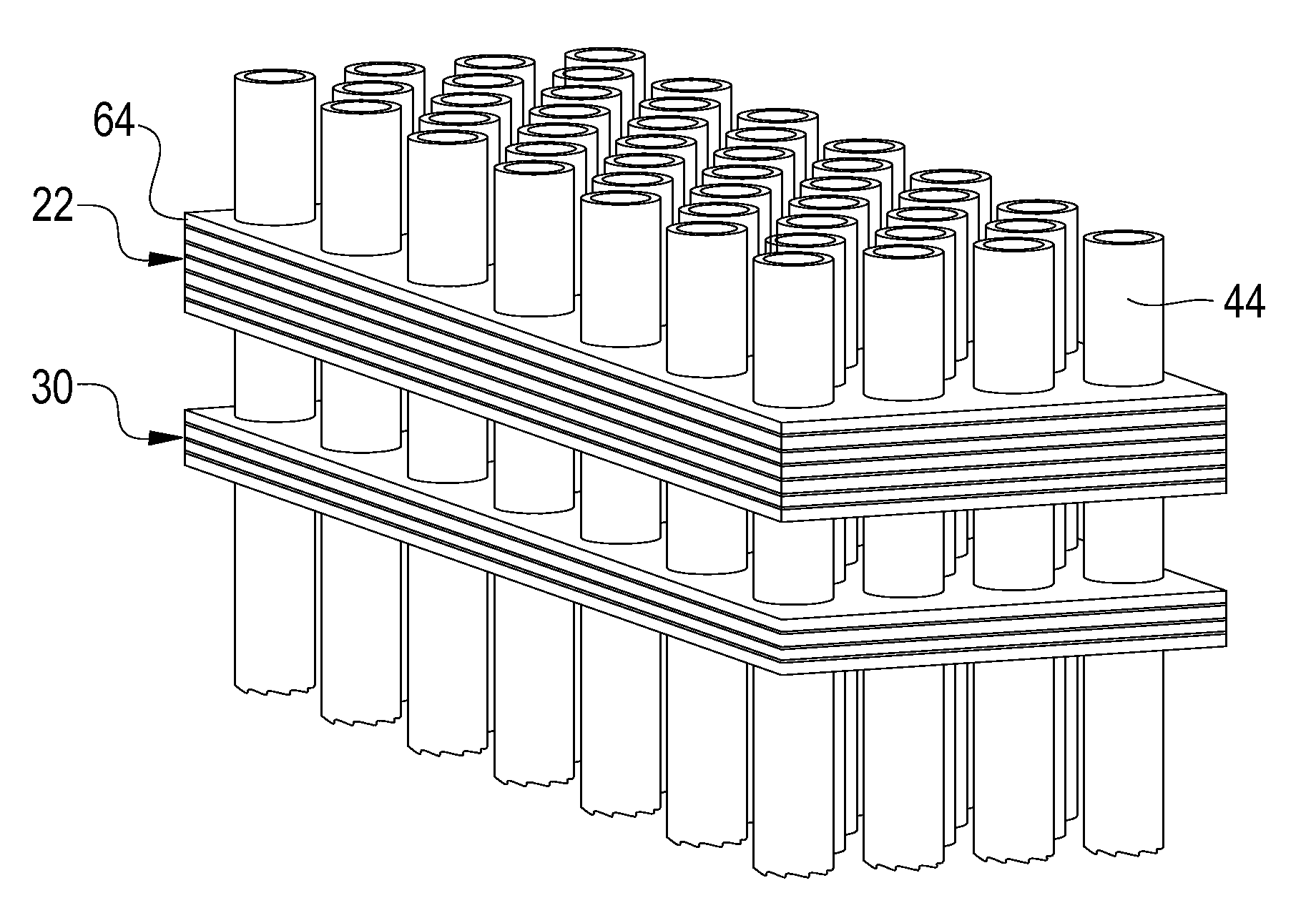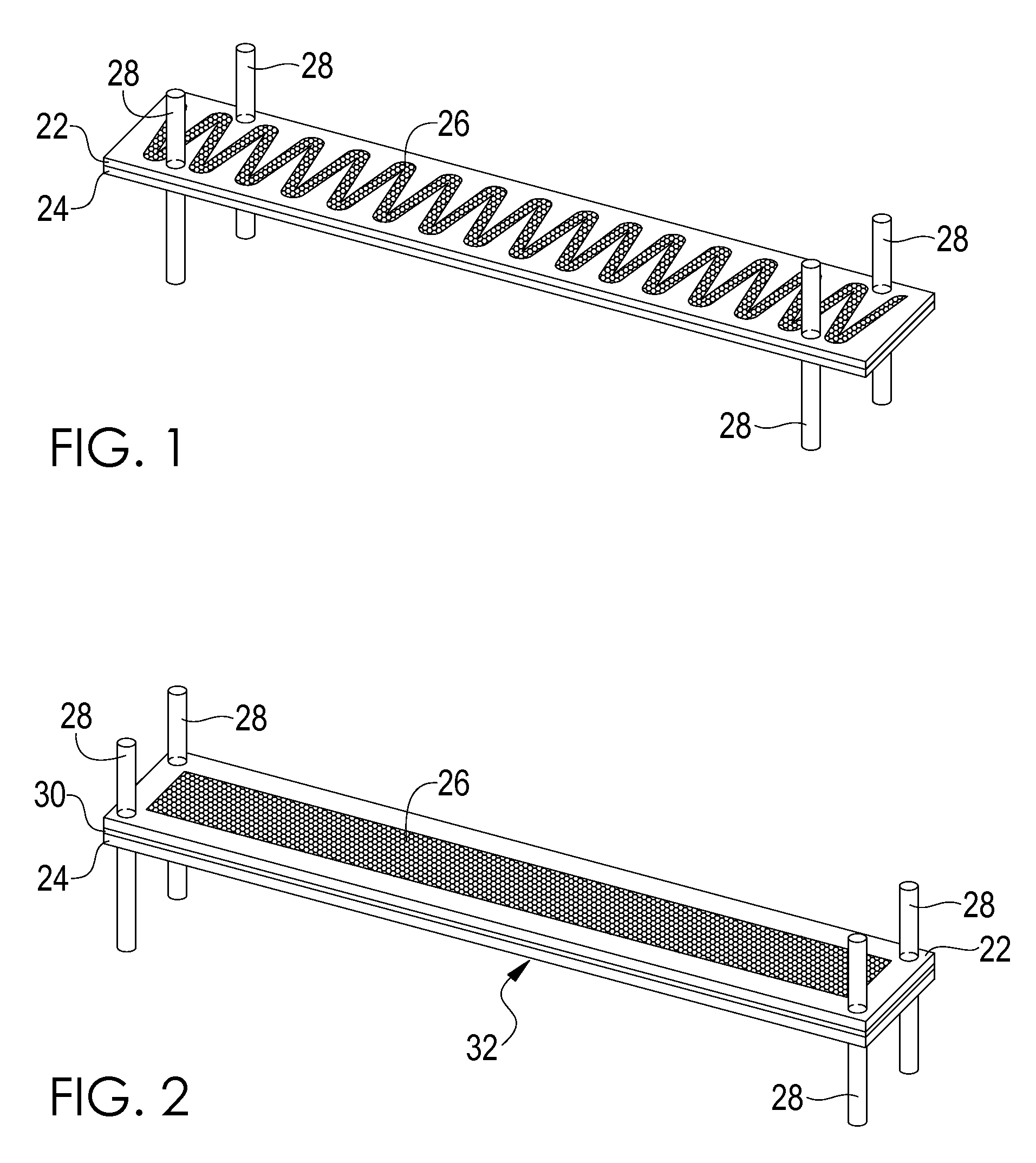Method for manufacturing a micro tube heat exchanger
a technology of heat exchangers and micro tubes, which is applied in the direction of adhesive processes with surface pretreatment, paper/cardboard containers, lighting and heating apparatuses, etc. it can solve the problems of tens or hundreds of leaks, time-consuming and expensive hole drilling, and reducing the efficiency of heat exchange, so as to increase the heat exchange area per unit volume, increase the heat transfer coefficient, and improve the effect of heat exchang
- Summary
- Abstract
- Description
- Claims
- Application Information
AI Technical Summary
Benefits of technology
Problems solved by technology
Method used
Image
Examples
Embodiment Construction
[0034]Illustrative embodiments of the invention are described below as they might be employed in the method of manufacturing a heat exchanger according to the present invention. It will be of course appreciated that in the development of an actual embodiment, numerous implementation-specific decisions must be made to achieve the developers' specific goals, such as compliance with system-related and business-related constraints, which will vary from one implementation to another. Moreover, it will be appreciated that such a development effort might be complex and time-consuming, but would nevertheless be a routine undertaking for those of ordinary skill in the art having the benefit of this disclosure.
[0035]Turning now to the Figures, one embodiment of the present invention includes a method for manufacturing a heat exchanger component 20 as shown in FIG. 9. As shown in FIG. 1, in at least one embodiment, two end plates may be provided wherein the end plates provided are a first end ...
PUM
| Property | Measurement | Unit |
|---|---|---|
| diameters | aaaaa | aaaaa |
| diameters | aaaaa | aaaaa |
| diameters | aaaaa | aaaaa |
Abstract
Description
Claims
Application Information
 Login to View More
Login to View More - R&D
- Intellectual Property
- Life Sciences
- Materials
- Tech Scout
- Unparalleled Data Quality
- Higher Quality Content
- 60% Fewer Hallucinations
Browse by: Latest US Patents, China's latest patents, Technical Efficacy Thesaurus, Application Domain, Technology Topic, Popular Technical Reports.
© 2025 PatSnap. All rights reserved.Legal|Privacy policy|Modern Slavery Act Transparency Statement|Sitemap|About US| Contact US: help@patsnap.com



